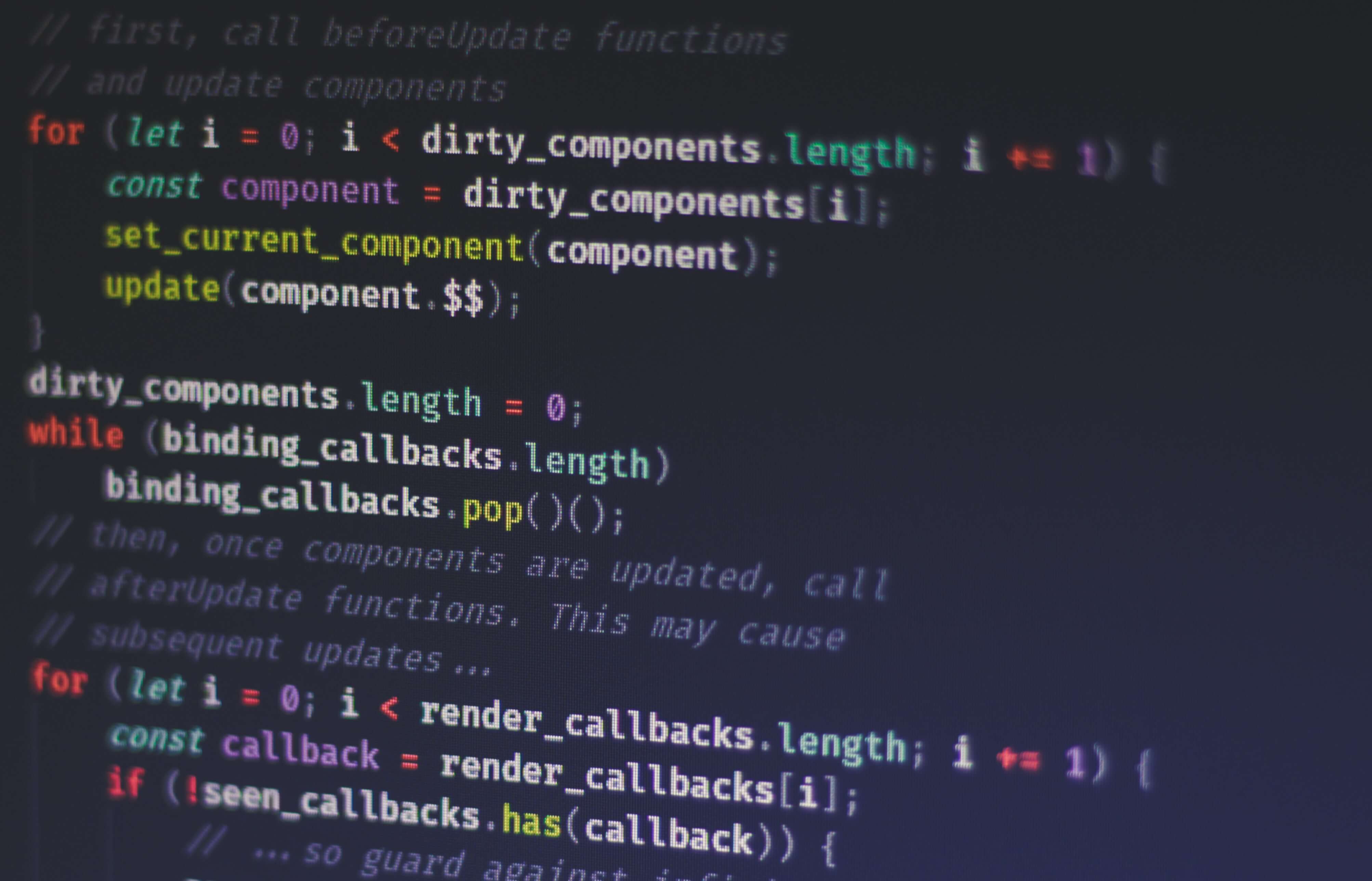Creating High-Performance Web Applications with React Development Services
Creating High-Performance Web Applications with React Development Services
Are you tired of sluggish web applications that just can't seem to keep up with your demands? Look no further than ReactJS development services. React is a high-performance, open-source JavaScript library that is optimized for building web applications with speed and efficiency. With its component-based architecture and declarative programming style, React is a popular choice for creating dynamic user interfaces that are both visually stunning and lightning-fast. In this blog, we will explore how ReactJS development services can help you create high-performance web applications that will leave your users impressed and satisfied.
Introduction to React Development Services

React is a popular open-source JavaScript library that was developed by Facebook. It is widely used for building dynamic and interactive user interfaces for web applications. Working with a React development company has become one of the most preferred choices for businesses, owing to its simplicity, flexibility, and robustness. ReactJS Development Services offer a range of benefits to businesses, including faster development cycles, easy maintenance, and better scalability.
One of the key advantages of working with a React development agency is its component-based architecture, which allows developers to break down complex UIs into smaller, reusable components. This makes the development process more efficient and helps to keep the codebase organized. Additionally, React's virtual DOM feature enables fast rendering of UI updates, resulting in a better user experience.
React can be used in combination with other technologies, such as Redux for state management, React Native for mobile app development, and Next.js for server-side rendering. This makes it a versatile tool for building modern web applications.
Key Principles for Creating High-Performance Web Applications
When building web applications with a React development company, there are several key principles that businesses should keep in mind to ensure high performance. Firstly, it is important to optimize the rendering process by minimizing the number of DOM manipulations required. This can be achieved by using React's virtual DOM feature, which reduces the number of actual DOM updates required.
Secondly, developers should aim to minimize the size of their application's JavaScript bundle. This can be done by code splitting, which involves breaking up the code into smaller chunks that can be loaded on-demand, rather than all at once. Additionally, developers should avoid unnecessary dependencies and use tools like Webpack to optimize the build process.
Thirdly, it is important to ensure that the application is responsive and fast, even on slow network connections. This can be achieved by using techniques like lazy loading, which delays the loading of non-critical assets until they are needed, a React development agency will be very familiar with this concept. Additionally, developers should ensure that the application is optimized for mobile devices, which often have slower processors and limited memory.
Finally, developers should ensure that their code is maintainable and scalable, by following best practices such as modularization, testing, and code reviews. This helps to ensure that the codebase remains organized and easy to maintain as the application grows.
Implementing React Components for Faster Rendering

React components are the building blocks of a React application. They are responsible for rendering UI elements, handling user interactions, and managing the application state. When implementing React components, there are several techniques that developers can use to optimize rendering performance.
One technique is to use functional components instead of class components, as functional components are generally faster and have a smaller memory footprint. Additionally, developers should aim to keep their components small and focused on a specific task, rather than trying to do too much in a single component.
Another technique is to use memoization to optimize the rendering of components that receive the same props repeatedly. Memoization involves caching the results of expensive function calls, so that they can be reused later without being recalculated.
Developers should avoid unnecessary rendering by using shouldComponentUpdate or React.memo to prevent components from rerendering when their props or state have not changed. This helps to minimize the number of DOM updates required and improve rendering performance.
Optimizing React App Architecture for Improved Performance
One way to optimize React app architecture is by using a modular approach. Breaking down your app into smaller, reusable components can help reduce complexity and improve performance. Additionally, using lazy loading can help reduce initial load times by only loading components as they're needed.
Another important consideration is optimizing the data flow within your application. Using a unidirectional data flow can help reduce unnecessary re-renders and improve performance. It's also important to avoid creating unnecessary state and to use pure components wherever possible.
Optimizing performance through code splitting can significantly improve app performance. By splitting your code into smaller, more manageable chunks, you can reduce the time it takes to load your app and improve overall performance.
Managing State in React Applications for Better Efficiency

Managing state in React applications is a crucial factor in improving app efficiency. One common way to manage state in React is through the use of a state management library like Redux or MobX.
These libraries provide a centralized store for managing state, which can help reduce the number of props being passed down through components. Additionally, state management libraries can help improve performance by reducing the number of re-renders necessary when state changes.
Another way to manage state in React is through the use of React Hooks. Hooks like useState and useReducer can help manage state within individual components, reducing the need for a centralized store. Additionally, using memoization techniques can help reduce unnecessary re-renders and improve performance.
When managing state with React development company applications, it's also important to consider the impact of asynchronous operations. Using asynchronous state management libraries like Redux-Saga can help improve performance by reducing the amount of time spent waiting for data to load.
Integrating React with Server-Side Rendering (SSR)
Integrating React with server-side rendering (SSR) can significantly improve app performance and user experience. SSR can help reduce initial load times by rendering the app on the server and sending a fully-formed HTML document to the client.
To integrate React with SSR, it's important to use a server-side rendering framework like Next.js or Gatsby. These frameworks provide built-in support for SSR and can help simplify the integration process. A React development agency will facilitate this for businesses especially when it comes to simplifying the integration.
Additionally, when integrating React with SSR, it's important to consider the impact of client-side hydration. Hydration is the process of attaching event listeners and other functionality to the app on the client side. Using techniques like code splitting and lazy loading can help reduce the amount of work required during the hydration process, improving overall performance.
Overall, integrating React with SSR can help improve app performance, particularly for users with slow or unreliable internet connections. By using a server-side rendering framework and optimizing client-side hydration, you can create fast, responsive React applications that provide a great user experience.
Tips for Monitoring and Optimizing React App Performance

React has gained popularity due to its ability to create complex applications with ease. However, as the size and complexity of a React app grows, it can lead to performance issues. Slow loading times and unresponsive UIs can have a negative impact on user experience. In this article, we will discuss tips for monitoring and optimizing React app performance.
Use React Profiler: React Profiler is a tool that allows you to identify and measure performance bottlenecks in your React app. It provides a visual representation of the components that are rendering and how long it takes for them to render. This information can help you identify components that are taking too long to render and optimize them. React Profiler can be used with the Chrome Developer Tools or React Developer Tools extension.
Code Splitting: Code splitting is a technique used to split your application code into smaller, more manageable chunks. This can improve performance by reducing the amount of code that needs to be loaded initially. By splitting your code into smaller chunks, you can also improve the user experience by reducing the time it takes to load the app. React has built-in support for code splitting using dynamic imports.
Avoid Unnecessary Renders: React re-renders components whenever there is a change in the props or state. However, sometimes a component may re-render even if the props or state haven't changed. This can be due to unnecessary re-renders caused by lifecycle methods or shouldComponentUpdate returning true. By optimizing your shouldComponentUpdate method or using React.memo, you can prevent unnecessary re-renders.
Use Performance Optimization Libraries: There are several libraries available that can help you optimize the performance of your React app. Some of the popular libraries include React Lazy Load, React Virtualized, and React Infinite Scroll. These libraries provide ready-to-use components that are optimized for performance. By using these libraries, you can improve the performance of your app without spending too much time on optimization.
Optimizing React app performance is crucial for providing a great user experience. By using tools like React Profiler, techniques like code splitting, and libraries like React Lazy Load, you can significantly improve the performance of your React app. By following these tips, you can ensure that your React app is fast and responsive, even as it grows in size and complexity.
Conclusion
ReactJS development services offer several benefits to businesses, including faster development cycles, easy maintenance, and better scalability. React's component-based architecture and virtual DOM feature make it an ideal choice for building high-performance web applications. When building web applications using React, developers should keep in mind key principles for ensuring high performance, such as optimizing rendering processes, minimizing JavaScript bundle sizes, and ensuring mobile responsiveness.



